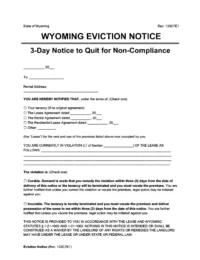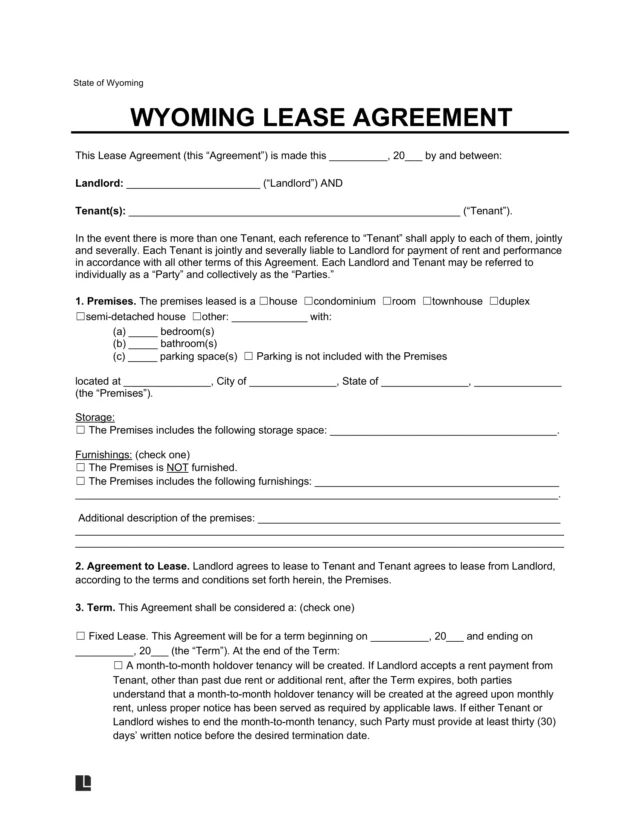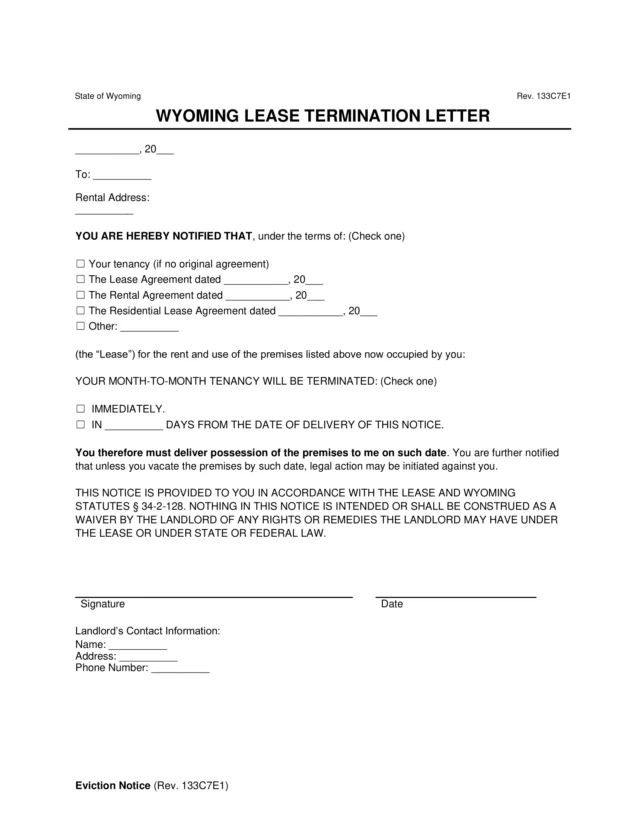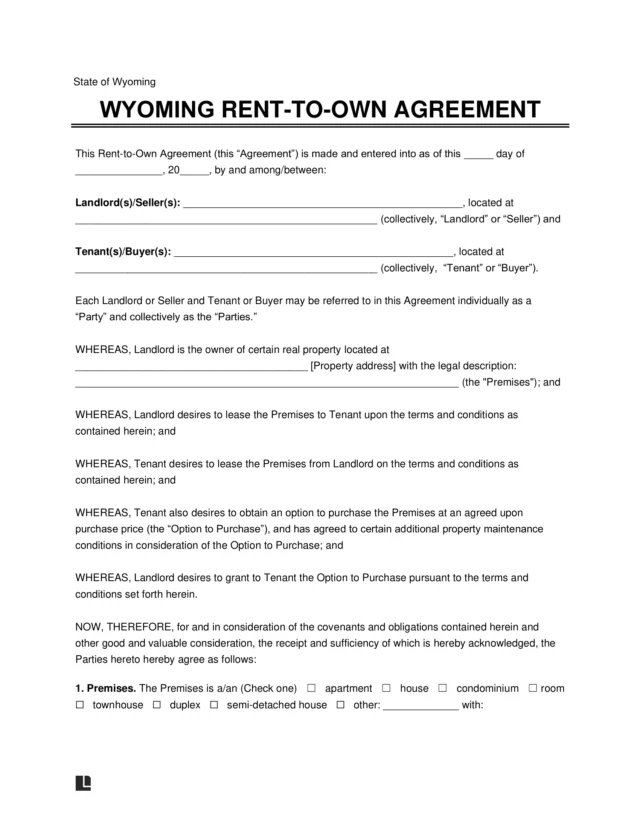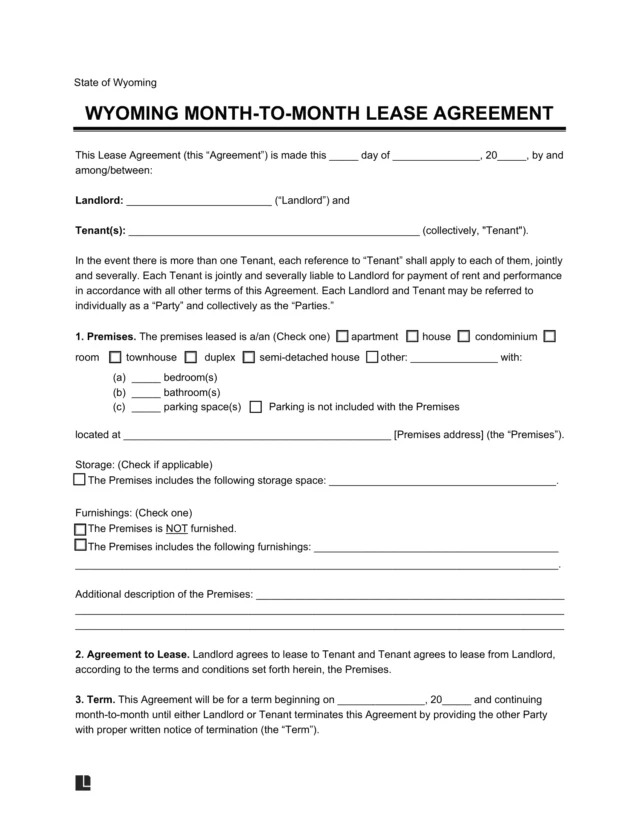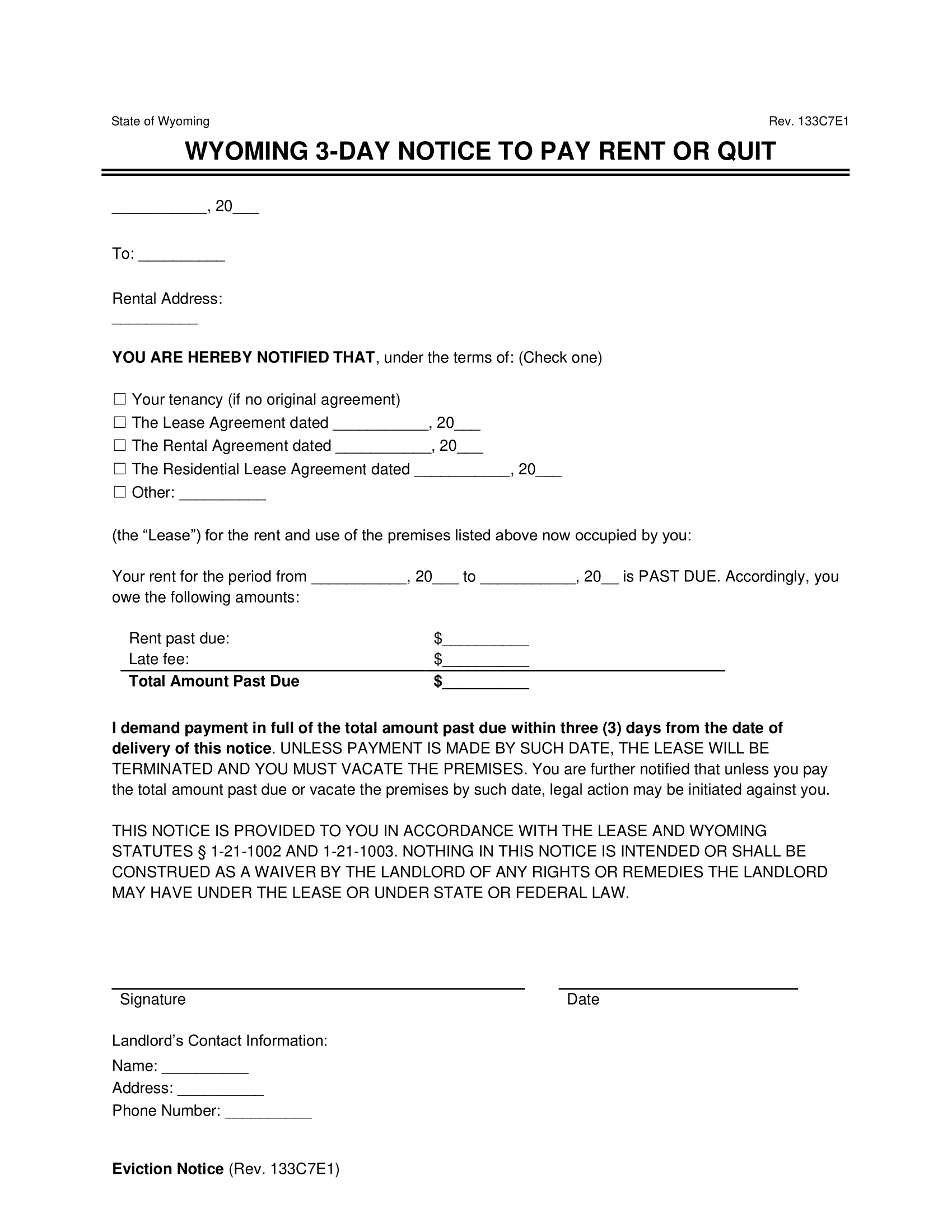Understanding Eviction Notices in Wyoming
In Wyoming, landlords must issue tenants a written notice before filing for eviction. Whether the notice is due to rent problems, lease breaches, or other causes, it is an essential part of complying with state laws.
Use our document editor to help you create a Wyoming eviction notice that meets legal requirements. Customize yours based on your tenant situation and download it as a PDF or Word file for delivery.
Types of Eviction Notices in Wyoming
Wyoming outlines specific notices that landlords must issue depending on whether they’re ending the tenancy due to lease violations or not renewing.
3-Day Notice to Pay Rent or Quit
This legal form demands that a tenant pay their overdue rent or face eviction under Wyo. Stat. § 1-21-1002 and § 1-21-1003. If a tenant pays the entire amount owed, including interest and late fees, the landlord can let them stay on the property. If the landlord doesn’t want to allow the tenant to keep living on the property, they can wait for the statutory notice period to pass to initiate a forcible entry and detainer suit to regain possession of the property.
3-Day Notice to Pay Rent or Quit
Give tenants three days to pay rent before the eviction process can proceed in court.
3-Day Notice to Quit for Non-Compliance
Issue this form to notify a tenant of a breach in their lease agreement. Some landlords will allow tenants to correct minor violations, like disposing of waste properly. Other landlords may deem the violation incurable, meaning the tenant will have to move out after three days and won’t have the chance to fix their mistake.
If the landlord allows a tenant to address the issue, the tenant must resolve the problem within three days. If the tenant doesn’t fix the violation after three days and remains on the property, the landlord can initiate an eviction lawsuit per Wyo. Stat. § 1-21-1204 and § 1-21-1002.
3-Day Notice to Quit for Non-Compliance
Give tenants three days’ notice before the eviction process can proceed in court. In that time, tenants may have the option to fix (or “cure”) the problem.
Lease Termination Notice
A landlord issues this form to their tenant when they want to end a month-to-month lease. Wyoming state law doesn’t mandate a specific notice period when terminating a lease. However, it’s considerate to give a notice equivalent to the length of the rental period, which is usually one month for periodic tenancies.
Lease Termination Notice
Let a tenant know that you’re ending a month-to-month lease.
How to Evict a Tenant in Wyoming
Title 1, Chapter 21, Article 10 of the Wyoming Statutes governs eviction lawsuits in Wyoming. Learn how the process works below.
Step 1 – Serve the Notice
The landlord should let the tenant know they either violated the lease terms or the landlord doesn’t intend to renew the lease (if the tenant is month-to-month).
Step 2 – Let the Tenant Respond
Give the tenant time to respond. They may correct their lease violation by rectifying a breach or paying rent within three days. If they don’t comply, you can proceed with the next step.
Step 3 – File for Eviction in Court
The landlord files a complaint explaining the reasons for the eviction and a summons for a writ of restitution at the local circuit court where the property is located.
Step 4 – Attend the Court Hearing
The circuit court will issue a summons to the tenant using a process server. The summons will tell the tenant the nature of the complaint and the court date. At this time, the tenant can file an answer.
Step 5 – Obtain a Writ of Restitution
If the tenant doesn’t appear at the hearing, the court will rule in the landlord’s favor per Wyo. Stat. § 1-21-1005. Under Wyo. Stat. § 1-21-1007, the tenant can ask to delay the court hearing. They may get a two-day extension at most or prolong it by paying a bond to cover potential damages to the landlord if the landlord wins the case.
If the landlord wins, the court can issue a writ of restitution under Wyo. Stat. § 1-21-1013, which is a legal order that allows the landlord to take back the property. A sheriff must execute this order to remove the tenant from the property forcibly.
Related Court Forms
- Answer to Complaint: This form allows the tenant to defend themselves from the claims made in the eviction notice. For instance, the tenant can answer that there is no violation and they should be able to remain on the property or deny the amount of damages owed.


